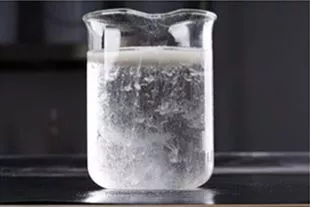In the field of pharmaceutical excipients,celluloseNanomaterials such as nanocellulose, cellulose nanocrystals, cellulose nanofibers and their derivatives have shown great potential in drug delivery systems due to their excellent biocompatibility, strong degradability, wide sources (renewable natural cellulose), and easy surface functionalization modification. They can solve the problems of insufficient targeting, low bioavailability, and high toxic side effects in traditional drug delivery. The following are its main application directions and prospects:
1、 As a drug carrier: enhancing the stability and bioavailability of drug delivery
Protect drug activity and improve stability
Many drugs, such as biomolecules like proteins, peptides, nucleic acids, or easily oxidizable small molecule drugs, are easily degraded by enzymes or inactivated by pH and temperature in the body. Cellulose based nanomaterials can encapsulate, adsorb, or covalently bind drugs into their nanostructures, forming a "protective layer":
For example, nanocellulose(5~100nm in diameter and several microns in length) can be assembled into nanocapsules or nano gel to wrap insulin, vaccines and other biological drugs in them, so as to avoid their destruction by digestive enzymes in the gastrointestinal tract and improve oral bioavailability (traditional oral bioavailability of insulin is only 0.1%~2%, while that of nanocellulose carrier can be increased to 5%~10%).
Control drug release rate
The structure (such as porosity and crystallinity) and surface functional groups of cellulose based nanomaterials can be modified and regulated to achieve sustained, controlled, or pulsed release of drugs
For example, cellulose nanocrystals (CNC) have highly crystalline rod like structures, and their surface hydroxyl groups can form hydrogen bonds with drug molecules. When releasing drugs, the hydrogen bonding needs to be overcome to slow down the release rate.
By grafting pH sensitive groups (such as carboxymethyl) onto the surface of cellulose nanomaterials, drugs can be rapidly released in specific pH environments (such as weakly acidic environments in tumor tissues or alkaline environments in the intestine), thereby increasing local drug concentrations.
2、 Realizing targeted delivery: improving drug enrichment at the lesion site
Traditional drug delivery systems often suffer from toxic side effects on normal tissues due to their "systemic distribution" (such as damage to the bone marrow and digestive tract caused by chemotherapy drugs). Cellulose based nanomaterials can achieve accurate delivery through surface modification of targeted molecules
Active targeting: Connecting targeting ligands (such as antibodies, peptides, and aptamers) to the surface of nanocellulose, these ligands can bind to specific receptors on the surface of lesion cells (such as tumor cells and inflammatory cells), guiding the targeted aggregation of drugs at the lesion site. For example, loading anticancer drugs (such as doxorubicin) onto cellulose nanoparticles modified with folic acid can target delivery through folate receptors highly expressed in tumor cells, reducing toxicity to the heart and kidneys.
Passive targeting: By utilizing the high permeability and retention effect (EPR) of tumor tissue, cellulose based nanomaterials (particle size 100-200nm) can be enriched at the tumor site through vascular wall loopholes, reducing penetration into normal tissues (traditional small molecule drugs are prone to spread throughout the body, while nanocarriers can increase drug concentration at the tumor site by 5-10 times through EPR effect).
3、 Building a multifunctional composite delivery system: integrating diagnostic and therapeutic functions
celluloseNanomaterials can be combined with other functional materials such as quantum dots, magnetic nanoparticles, and photosensitizers to construct an "integrated diagnosis and treatment" delivery system, achieving synergistic drug delivery, disease diagnosis, and efficacy monitoring
For example, by combining magnetic nanoparticles (Fe ∝ O ₄) with nanocellulose and loading chemotherapy drugs, they can be guided to the tumor site through an external magnetic field (magnetic targeting), while using the magnetic resonance imaging (MRI) function of magnetic particles to monitor drug distribution in real time; In addition, the composite system can be loaded with photosensitizers to generate photothermal effects under near-infrared light irradiation, achieving a combined anti-cancer effect of "chemotherapy+photothermal therapy".
This multifunctional system can improve treatment accuracy, reduce blind medication, and is particularly suitable for the treatment of complex diseases such as cancer and rheumatoid arthritis.
4、 Mucosal adhesion delivery: enhancing local drug action time
For diseases of the oral cavity, eyes, nasal cavity, gastrointestinal tract and other mucosal areas (such as oral ulcers, eye inflammation, gastric ulcers), the mucosal adhesion of cellulose based nanomaterials can prolong the retention time of drugs in the lesions:
The hydroxyl group in the cellulose molecular chain can form a hydrogen bond with the mucin on the mucosal surface (containing a large number of glycosyl groups), so that the nano carrier can adhere to the mucosal surface and avoid the rapid washing of drugs by body fluids (for example, the antibacterial drug loaded on the cellulose nano gel for oral use can extend the action time from 2 hours to 6~8 hours).
In gastrointestinal delivery, cellulose based nanomaterials can adhere to the intestinal mucosa, slowly release drugs, and improve the absorption efficiency of drugs in the intestine (such as in probiotic preparations, nanocellulose carriers can protect probiotics from passing through the gastric acid environment and adhere to the intestinal wall for colonization).
Summary of Application Prospects
The core advantages of cellulose based nanomaterials in drug delivery systems are high biological safety (natural source, degradable into glucose, non-toxic residue), strong structural controllability (achieved through modification for targeting, controlled release, and other functions), and relatively low cost (raw material is plant cellulose, easy to produce on a large scale). In the future, with the optimization of preparation processes (such as more accurate particle size control, more effective functional modification) and the deepening of clinical research, it is expected to achieve breakthroughs in the following areas:
Delivery of oral biomacromolecule drugs (such as protein and mRNA vaccines);
Accurate targeted therapy and combination therapy for cancer;
Long acting sustained-release preparations for chronic diseases (such as diabetes and hypertension).
At present, some cellulose based nanomedicine delivery systems have entered the preclinical research stage (such as tumor targeted delivery of paclitaxel loaded on nanocellulose), and it is expected to gradually achieve clinical translation in the next 10-20 years, becoming an important direction for the new generation of drug delivery technology.


TEL:+86 (0311) 8444 9786
Email:sales@double-bulls.com
Email:Export@double-bulls.com
Address:No.9 Weisi Road, Jinzhou City Eco-nomic Development Zone, Shijiazhuang City, Hebei Province.

Website

Brochure

Video